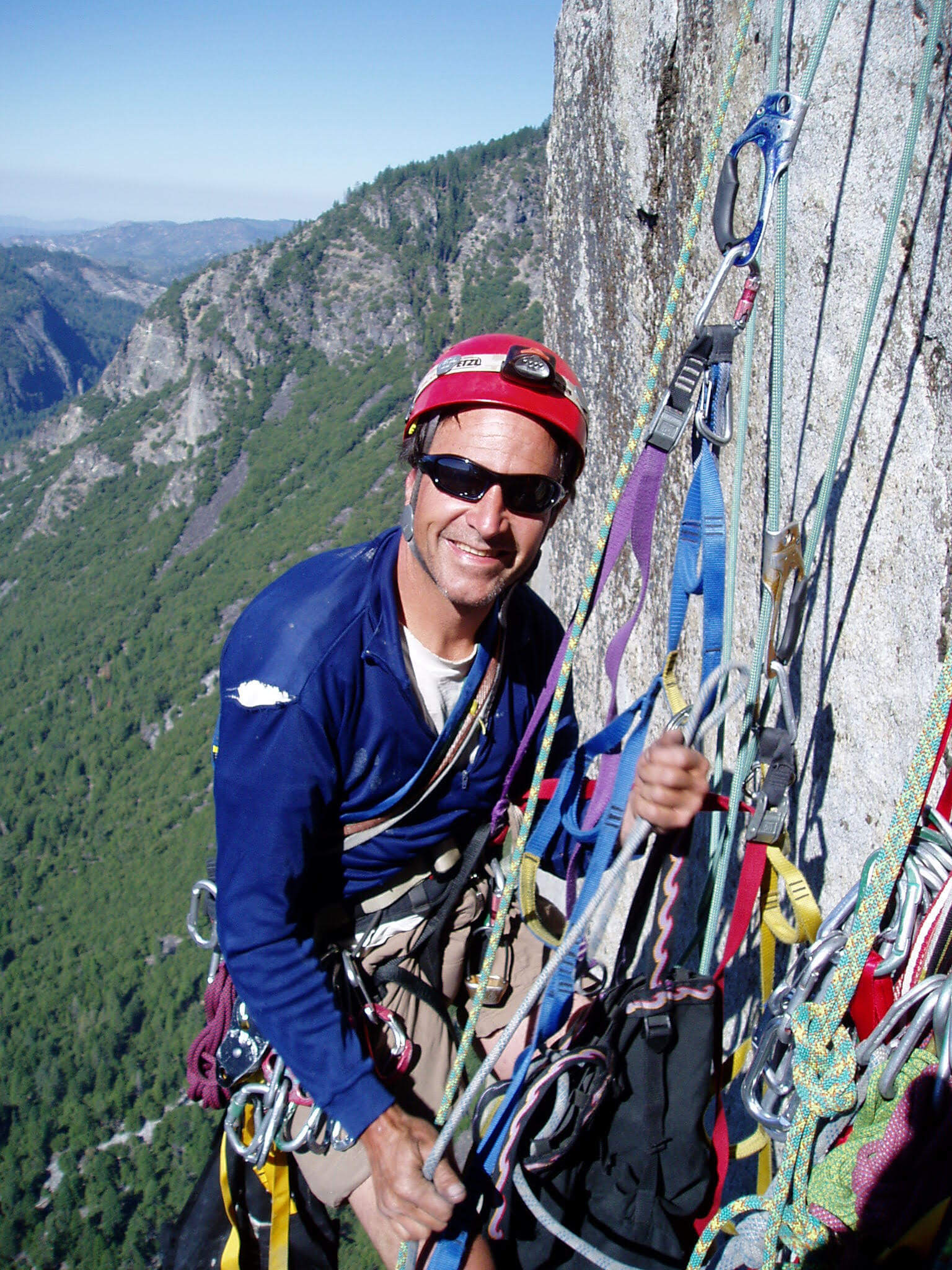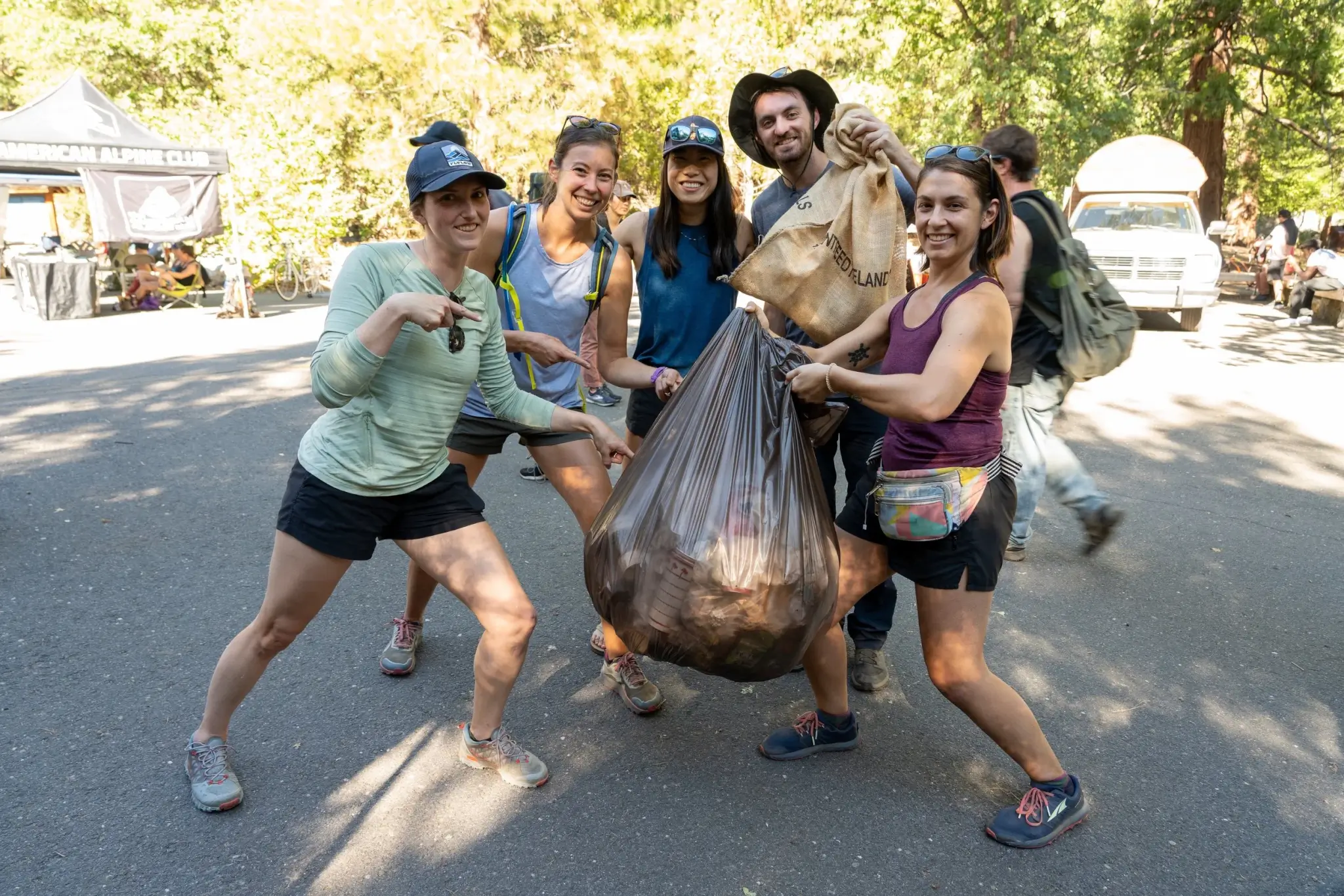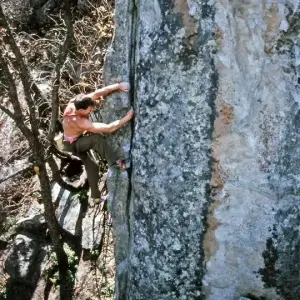Yosemite has long been the beating heart of the climbing world, a place where legends are made and lifelong connections are forged on granite walls. Few people know this better than Ken Yager, founder and president of the Yosemite Climbing Association.
From his first awe-struck trip in the early 1970s to his decades of stewardship through conservation and community-building, Ken has been both a witness to and a shaper of Yosemite’s climbing history. In this conversation, he reflects on the past, shares unforgettable stories, and offers wisdom for both climbers and visitors alike.
You began climbing in Yosemite as a young teen in the early ‘70s, what was it about this place that drew you in?
I had heard heroic stories of climbing on Yosemite’s big walls and it had a reputation for boldness. The best climbers of each generation had spent time there. I read their stories and was mesmerized by their perseverance and apparent fearlessness . My first trip to Yosemite was in 1972. I was in awe. I had never seen so much rock in one place and the walls were 10 times higher than anything I had climbed before. On the way out I had my parents stop in El Cap Meadow and I ran up to the base of El Capitan. I touched it and I knew I had to climb it.
How has Yosemite’s climbing community changed since you first started? What stays the same?
The biggest change has been the positive relationship with the national park system (NPS). The current climbing community appears to have more wealth than in the 1970s. There are substantially more climbers now of all ages and genders. There are also a lot more climbs to choose from and there are so many exceptional climbers doing amazing things on a daily basis.
Yosemite is still an International climbing destination. Yosemite’s high quality rock, good weather and easy access have made it a training ground to learn the skills needed for other more remote locations. The comradery and friendships made on Yosemite’s walls has stayed the same as has the ability to find adventure.
What’s one climbing story or moment here that really stuck with you?
I have had many experiences that have been memorable. For example, I was climbing a route on El Capitan called Eagles Way. During the second day, a thunder storm moved in and it rained so hard that I could not see Middle Cathedral Rock less than a half mile away.
When the storm started we were under Horsetail Falls. The waterfall started up and completely surrounded us. As my partner climbed up and left to get away I hunkered down getting blasted by water at firehose pressure. It had not rained in a long time and a lot of debris was washed over the edge during the deluge.
I watched a dead tree rolling in the waterfall pass behind me about 10 feet away. I thought that if I didn’t get taken out by dead trees that I would surely drown. That is one experience I do not want to repeat.
You’ve been deeply involved in Yosemite’s community beyond climbing. Can you share what projects or roles you’re most proud of?
I am proud of the current positive relationship between the NPS and the climbing community. I am pretty sure it is partially due to some of the programs I developed. The biggest one being the Yosemite Facelift, a 5-day volunteer cleanup event.
The Facelift has been responsible for cleaning up 1.2 million pounds of trash and completed many service projects since 2004. The Facelift event is now a partnership between NPS and the Yosemite Climbing Association and is considered to be the biggest volunteer event in a National Park. In 1992, Mike Corbett and I started collecting historical Yosemite climbing related artifacts with the intention of someday building a museum in Yosemite.

I started the non-profit Yosemite Climbing Association in 2003 to provide public ownership of the 10,000+ items that had been collected. It took me 30 years of letter writing and lobbying to get a permanent climbing display in the park.
Additionally, I simultaneously built a museum in the town of Mariposa. I started an interpretive program in El Capitan Meadow which the NPS now operates called the Ask-A-Climber Program. Two telescopes are set up in the meadow for Park guests to view climbers on El Capitan.
Visitors can watch them climb and get informative answers to their questions. The program has been seeing 600+ people a day looking through the telescopes in just 4 hours. It is now the most popular interpretive program in Yosemite.
How do you see climbing and conservation working together in Yosemite? Why is it important for visitors and climbers to care about the park’s natural environment?
I think conservation needs to be a part of everyday life for everybody that not only visits the Park, but throughout the world. People that spend a lot of time outdoors in wild places have seen the changes occurring at a frightening pace due to climate change. Climbers have had their conservation champions since the beginning of the sport. The well known ones being John Muir, David Brower, and Yvon Chouinard. National Parks are the perfect classroom to learn about our Earth and the human impact on it. Spending time in the wilderness allows you to see how everything is connected and that it is symbiotic in nature. It makes you realize that we don’t really need all the belongings that most of us humans consider an everyday necessity. We can all learn from our outdoor experiences.
What advice would you give to someone visiting Yosemite for the first time, whether they’re climbers or just nature lovers?
First put your cell phone on Do Not Disturb and only use it to take photos. Once there, park your car and explore by foot, bicycle or bus. Be careful around the rivers and waterfalls during high water and on top of the Yosemite cliffs. Despite its many visitors, Yosemite can be a dangerous place. Use your common sense. Don’t be a statistic.
 Ken Yager’s story is a reminder that Yosemite is more than a destination, it is a living classroom, a proving ground, and a community built on respect for both adventure and the natural world. His stories highlight not only the thrill of climbing but also the responsibility we all share in caring for this extraordinary place.
Ken Yager’s story is a reminder that Yosemite is more than a destination, it is a living classroom, a proving ground, and a community built on respect for both adventure and the natural world. His stories highlight not only the thrill of climbing but also the responsibility we all share in caring for this extraordinary place.
Visitors can take part in this legacy firsthand. A visit to the Yosemite Climbing Museum in Mariposa offers a rare opportunity to explore the history and evolution of climbing through thousands of preserved artifacts and exhibits.
For those inspired to give back, the annual Yosemite Facelift brings together climbers, visitors, and park supporters in the largest volunteer cleanup of any national park. Together, these efforts ensure that Yosemite’s landscapes and stories will endure for generations to come.

